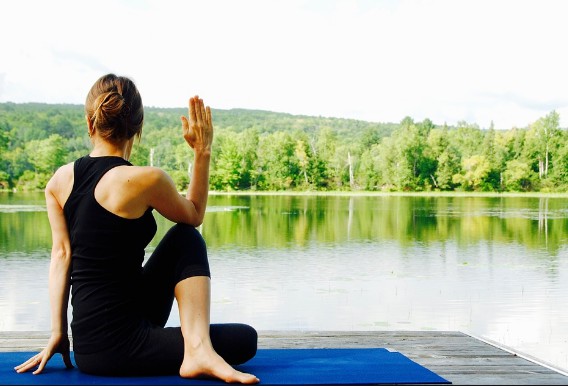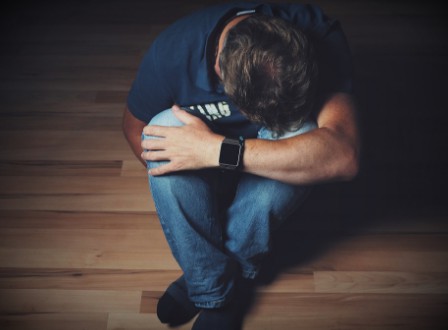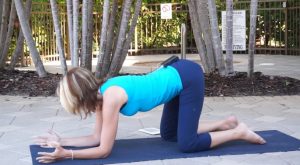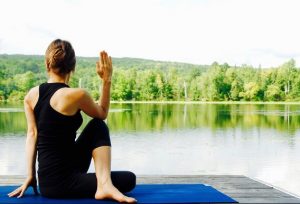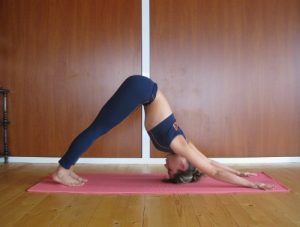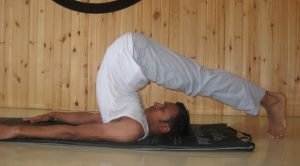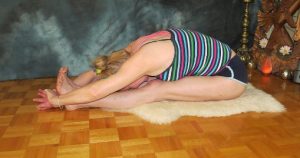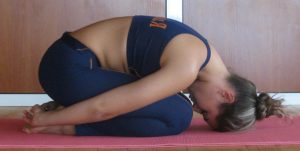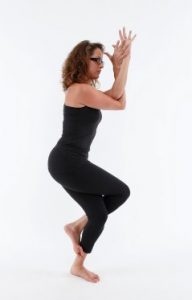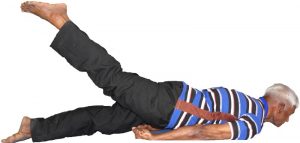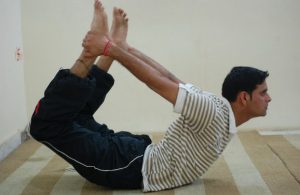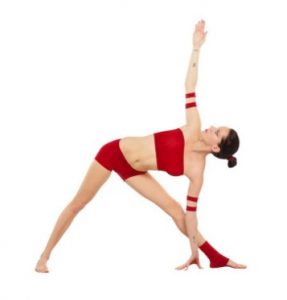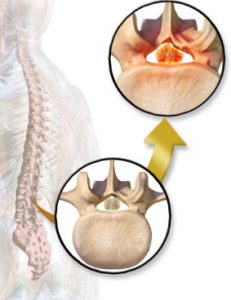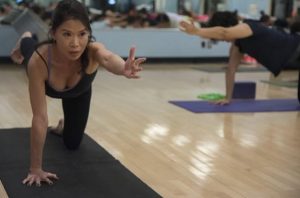Americans spend $200 billion per year on treating their back pain, and a majority of them are not satisfied with the treatment they are receiving. Frequently they are stuck having to rely on spending large amounts of money on physical therapy or addictive pain medications.
Numerous studies have shown yoga may be effective at decreasing dependence on pain medications and treating lower back pain. A study was published in the high-ranking medical journal called Annals of Internal Medicine that showed it might be as effective as physical therapy is. It is a critical step in getting more doctors to recommend yoga as an option for treatment and getting insurance to cover all or part of it.
Although there isn’t any one treatment that will work equally well for anyone, there are a number of different aspects to yoga that make it perfect for treating neck pain and back pain. There have been studies that show that individuals who practice yoga for as short a time as twice per week over 8 weeks can make significant gains in endurance, flexibility and strength, which for a majority of rehabilitation programs for neck pain or back pain is a major goal.
Benefits of Yoga Exercises
Numerous individuals with back problems have discovered that yoga provides them with several important benefits, including the following:
- Stretching with yoga helps to increase flood flow, which allows toxins to flow out and nutrients to flow in, and provide the soft tissues and muscles in the lower back with nourishment
- Helps to maintain the spine’s natural curvature
- Helps the body maintain proper movement and upright posture
- Helps to expand expand motion within the pelvis and decrease stress across your lower back
- Body alignment, balance and posture through yoga
- Reduces tension within stress-carrying muscles
- Relaxation and stretching from yoga
- Increases flexibility and strength
- Relieves pain
Also, the meditation and breathing aspects of yoga that bring on a “relaxation response” in many studies has been found to help individuals with decreasing their pain. It has also been found that yoga is helpful with treating anxiety and depression that often accompanies problems with pain.
10 Yoga Postures for Alleviating Back Pain
Whether you have chronic or acute back pain, consult with your doctor prior to starting on a new exercise regimen. This sequence can then be approached as a kind of self-care: Make sure to go easy, to soothe your body, mind and nerves. When moving from one pose to the next, use fluid, deep breaths. If you start feeling any strain within your lower back, either skip the pose or reduce the range of motion you are using.
1. Cat/Cow
This pose moves the whole spine to bring flexibility and mobility from sacrum up to the top of one’s cervical spine. This is one of the very best yoga poses to do for middle back pain, in addition to pain in the upper and lower back. Start on all fours, with your knees under your hips and your wrists under your shoulders. Lengthen your tailbone down and forward slightly so that your low belly is engaged while the crown of your head reaches forward for lengthening your spine. Drop your belly in the direction of the floor and inhale while your gaze lifts, your heart reaches forward in between your arms, your shoulder blades on the back slide together and your tailbone lifts. Then exhale, with your tailbone tucked under and push away the floor to arch your back the way a cat does, with your chin tucked into your chest. Slowly repeat this an additional five times, following your breath.
2. Spinal Twist
In terms of twisting postures, there are many options available to you. Marichyasana C. is one of the most effective and basic ones. Bend your right leg with your foot flat while keeping your left leg straight. For support, similar to a tripod, put your right hand onto the floor in back of you, and twist so that you are able to hook your left elbow across your right thigh. If that is too much, another thing you can do is grab your right knee and then twist and look past your right shoulder. Or you can also bend your left leg underneath you or bend both of your legs and allow them to fall to the side and then twist in whatever way your knees are pointed.
3. Downward Dog
There is a good reason why this is one of the most well-known yoga poses. Downward dog strengthens the lower back, hamstrings and core and also elongates the cervical spine. Begin on your knees and hands, tuck in your toes, and then raise your hips while bringing your heels towards the ground. Hold this for five breaths.
4. Plow Pose
Staring from a shoulder stand, bend from your hips to bring either the tops of your feet or toes to the floor. For support, your hands can stay against your back, or you can instead claps them together, while your forearms are kept on the floor. Hold for as long as it is comfortable for you to get a powerful stretch in your spine and shoulders. It that’s too much, you instead can put a chair in back of you and your feet can rest on it.
5. Seated Forward Fold
It can be easy to perform this pose in a way that will not benefit you, however when it is done right your lower back can be opened and provide you with relief from pain and stiffness. Start seated with your legs extending forward, and then bend at the hips and reach for your feet, ankles or shins. Continue reaching your sternum forward to lengthen your torso rather than rounding your back. It that hurts your back, you can bend your knees.
6. Child’s Pose
This pose is a great way to relax, and also stretch your hips and entire back. Begin on all fours, keeping your arms forward and sitting back so that your butt rests right over your heels. Hold while breathing deeply, and feel your breath reach all the way down to your hips. You will feel more relief the more that you extend in one direction or the other.
7. Eagle Pose
This posture is more advanced and requires strength and balance. However, it can help you open and stretch your entire back. Starting from the Mountain Pose, slightly bend your knees, lift up your right leg and then move your right thigh over your left one. Then point your foot towards the floor, and then either hook your right food in back of your left calf or stop and balance with your toes on the ground. For your arms, place our right arm underneath your left one, and then with your elbows bent, put your palms together. When your elbows are drawn up and your hands are moved from your face, it will provide you with a powerful stretch.
8. Locust Pose
Lie down on your stomach, with your hands clasped together in the back of your head and your forehead on the floor. Reach back between your legs (like you did with the sphinx and cobra) and click all of your toenails on your mat or floor. Inhale and then roll your shoulders back and move so that your shoulder baldes are moved together on your back. Let this action lift up your upper body from the mat. It feels fine on your neck look forward. Otherwise, allow your eyes to rest a couple of inches above your mat. Your shoulder blades should be kept engaged and lift to breathe for three breaths, before lowing down to rest.
9. Bow Pose
Lie face down and reach your hands towards your ankle. Then grab one ankle at a time. Lift your thighs and chest slowly away from the floor through drawing your chest forward with the back of thighs pointing towards the sky. The pose is a great way to strengthen your back muscles. However, it can be intense so you need to take it easy if you have had a back injury.
10. Triangle Pose
Stand so that your feet are parallel with one another around three feet apart. Rotate your right foot until our right heel is aligned with your left foot’s arch. Extend your arms to the side, and then tilt at your hip and reach your right hand towards the ground, on one side of your foot or the other. Rotate your body over to the side and then reach the fingers on your left towards the sky. Look at your left hand (if doing so doesn’t hurt your neck) and then hold for five to seven breaths and then switch sides.
- 71" long 24" wide ensures comfort for people of all shapes and sizes....
- With double sided non-slip surfaces, BalanceFrom all-purpose premium...
- Exceptional resilience allow you to keep your balance during any...
- Easy strapping and light weight feature are added to this mat for easy...
- A free yoga mat strap is included. All genuine BalanceFrom products...
Are there Any Individuals who Shouldn’t Do Yoga?
Basically, yoga can be safe for anyone to do. However, certain poses might need to be avoided or modified, depending on a person’s medical condition. A few examples of individuals who might to avoid doing certain yoga poses included the following:
- Patients with an advanced spinal stenosis diagnosis should avoid any extreme spine extensions, like yoga back bends.
- Patients that have advanced cervical spine disease need to avoid doing yoga shoulder stands and headstands.
A majority of the precautions that relate to yoga poses may be determined through locating a good yoga teacher to help, using common sense and understanding any specific medical conditions you have.
How can I Locate a Good Yoga Teacher?
The following are a couple of suggestions on how a yoga teacher can be evaluated:
- Ask if a yoga teacher has worked with individuals with spine problems before.
- Ask the yoga teacher about their training, and if they have attended any courses on the spine and yoga. Many yoga teachers do undergo course work and advanced training in these areas.
- It is recommended that any medical condition you have be explained to the yoga teacher before class, and ask for help with modifying any yoga poses that might be initially too painful or difficult for you.
- After you have learned the basic yoga poses, tapes and books can be a valuable resource as well. However, at first, the best thing to do is learn from a yoga instructor who can help and observe, and then use books and tapes for additional yoga study and practicing at home.
Yoga Books
- Amazon Kindle Edition
- Fishman, Loren (Author)
- English (Publication Language)
- 208 Pages - 05/14/2012 (Publication Date) - W. W. Norton & Company...
Yoga DVDs
Final Words
In terms of back pain, the key is prevention to having a pain-free and long life. However it is also very important to listen to your body. Don’t force any pose that might cause an injury. If you have extreme pain, you might need to get medical attention.
Last update on 2021-01-12 / Affiliate links / Images from Amazon Product Advertising API
